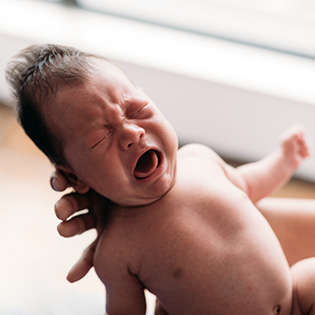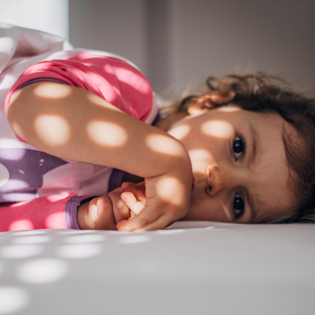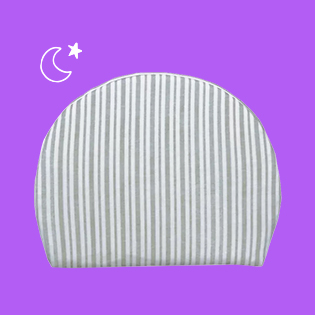Your breasts seem to be getting larger (by the day!) during your pregnancy, which means they're also probably extremely sensitive and tender. Breast tenderness is one of the first (and most common) symptoms of pregnancy, starting as early as weeks 4 to 7 and lasting through the first trimester.
Other changes will happen to your breasts throughout your pregnancy — the last of which will likely be the production of colostrum, the precursor to breast milk and your baby's first food after delivery — which can also cause some pain and tenderness. You may even notice colostrum start to leak around week 38.
Get clued in on what’s behind breast discomfort during pregnancy, as well as what the pain actually feels like and how long it’ll last.
What does breast pain feel like during pregnancy?
Your breasts may feel heavy, full and tingly,[1] though breast pain is as individual as any other pregnancy change. Some women won’t be bothered much by it, while others will be in greater discomfort.
For other pregnant moms, breast pain is like a dull ache, soreness or tenderness, though some report sharp, shooting pain too.
Breast tenderness is one of the many common pregnancy symptoms that you can track with the My Journal feature in the What to Expect app.
What causes breast pain and sore nipples during pregnancy?
The dazzling hormonal duo of estrogen and progesterone deserve most of the credit for breast changes and tenderness.[2] Other factors include the (good and necessary) buildup of fat, tissue and milk glands in your breasts, along with increased blood flow to the area. All these changes are helping your breasts get ready for breastfeeding in just a few short months.
Read This Next
Nipple pain is also rather common, as the same hormones behind breast tenderness can cause these areas to feel more sensitive to the touch.
And as you near the end of the third trimester, your body kicks into high gear to get ready for your baby’s imminent arrival. You might feel breast pain and tenderness again at this point since colostrum production is beginning.
What other breast changes occur during pregnancy?
In addition to that tender, full feeling, you'll likely notice a few other breast changes during pregnancy:
- Your nipples. Along with achiness and tingling, your nipples may be protruding more than usual and feel more tender.
- Your areolas. If you're like most women, your areola (the dark area around the nipple) has become darker, bigger and possibly spotted — a phenomenon that will continue as the months pass. Your areola will also be sporting Montgomery’s tubercles, little goose bumps (actually oil glands) that supply lubrication to the area.
- Your veins. You may also see a network of blue veins just below the skin's surface, which carry nutrients and fluids from mother to baby. How noticeable it is may depend on your genes, the size of your breasts and whether you’ve had augmentation surgery.
- Discharge. Got leaky breasts along with pain and tenderness? This combination is considered normal during pregnancy. The discharge may start off thin and watery, or it could appear thick and sticky later on, which is the consistency of colostrum.
How to relieve breast pain and sore nipples
The best medicine for breast pain usually isn't a prescription (but talk with your doctor if the pain is intense). Instead, look to these home remedies to relieve the discomfort and tenderness:
- Invest in a good bra. Get measured by a specialist, if you can, for a supportive (but not too tight!) fit.
- Wear a comfy nursing bra. This item is a maternity must-have. Look for wire-free, unpadded options that don’t have hooks or snaps and then wear it at night. Position changes during sleep can irritate sore nipples or make tender breasts even more sore. A cotton sports bra without underwire is another good option.
- Apply cold compresses. Cold packs on your breasts can relieve discomfort. Protect your skin by wrapping an ice pack in a wash cloth or put a bag of frozen peas and carrots in a dish towel.
- Hit the showers. Not a fan of the cold? Warm water from the shower can ease pain too.
- Use lotion. Moisturize swollen breasts and tender nipples with a lanolin cream.
- Wear loose clothing. Just like an ill-fitting bra, tops that are too snug may pinch your breasts and cause more pain. The fix: loose, flowing blouses and extra large tees.
- Talk to your partner. Make sure they’re aware of the situation in order to proceed with caution.
- Ask about OTC relief. Check in with your doctor about taking an over-the-counter pain reliever if the other home remedies aren’t helping.
How long do your breasts and nipples stay sore during pregnancy?
Breast pain and tenderness are both common in the first trimester, though they tend to level off in the second and third. Discomfort can return when lactation starts and your breasts transition from producing colostrum to making more mature milk for your baby.
Can breast pain continue after pregnancy?
Breast pain can also occur postpartum in the form of engorgement, which happens in the days after you give birth, as your breasts swell and harden with milk and the extra blood and fluids that go into making it.
Engorged breasts can feel very hard, swollen and painful, and may even feel warm to the touch, while the skin around your nipples may be flat and hard.
Engorgement can happen not only when your milk first comes in, but also later as you work to establish a solid breastfeeding routine. It’s perfectly normal, and you can try following the same tips (like wearing a supportive bra and using compresses) to relieve some of the discomfort.
Breast pain and tenderness are very common in pregnancy and right after you deliver. But if it becomes worse or hangs on for longer than you think it should, check in with your doctor. With a few quick remedies and some early breastfeeding advice, you’ll be pain-free in no time.












































 Trending On What to Expect
Trending On What to Expect





